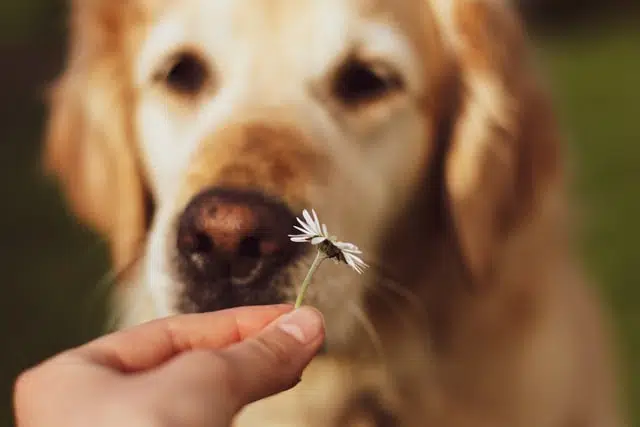Home » Blog » Pet » Pets: Understanding Them » All About The Golden Retriever
Categories
Tags
animal welfare
breed profile
buying a car
buying a pet
Car
car accessories
car care
car features
car insurance
Car safety
car sales
car service
cat
cat behaviour
cat body language
Cat Breeds
cat food
cat insurance
comprehensive car insurance
Dog
Dog Behaviour
dog body language
Dog Breeds
dog food
Dog Insurance
dog training
eco friendly cars
Kitten
New Car
pet accessories
pet activities
Pet Adoption
pet breeders
pet days of the year
pet fun stuff
Pet Health
pet insurance
pet parenting
Pet Safety
pet services
Puppy
rescue pets
road safety
road trip
safe driving
Recent Blog:
Facebook Posts
1 day ago
Growing old sometimes means we can’t take care of pets anymore. Find out some advice on what to do when this happens:![]()
![]() Senior Pet Parents – Contingency Plans for Your Pet – bit.ly/44bzwkS
... See MoreSee Less
Senior Pet Parents – Contingency Plans for Your Pet – bit.ly/44bzwkS
... See MoreSee Less
Senior Pet Parents' Contingency Plans for Pets
www.pd.com.au
Sometimes senior pet parents need more downtime. For older pet owners, this can be tricky to navigate if their dog or cat is full of beans and wants to3 days ago
Before you rev up the engine, let’s run through a checklist of things to do before starting your car. Not only do these steps ensure your safety (and that of others around you), but they also help in maintaining your vehicle's longevity.![]()
![]() Driving Tips: Your Checklist Before Starting Your Car -
... See MoreSee Less
Driving Tips: Your Checklist Before Starting Your Car -
... See MoreSee Less
Driving Tips: Your Checklist Before Starting Your Car
www.pd.com.au
Heading out for a drive? Hold up a second! Whether you're dashing off to work, running errands, or embarking on a road trip adventure, there are a few1 week ago
Are intestinal worms setting up camp in your dog’s gut without paying rent? Here’s how to spot the main culprits and get rid of them too:![]()
![]() Preventing, Identifying and Treating Intestinal Worms in Dogs - bit.ly/43YjCKu
... See MoreSee Less
Preventing, Identifying and Treating Intestinal Worms in Dogs - bit.ly/43YjCKu
... See MoreSee Less
Preventing, Identifying and Treating Intestinal Worms in Dogs
www.pd.com.au
Intestinal worms, such as roundworms in dogs are one of the least glamorous topics on the planet. These intestinal parasites that basically use our dogsWith its feathery coat and soulful eyes, its no wonder the Golden Retriever is such a popular dog. In fact, Goldies were Australia’s most Googled dog last year – hitting a whopping 1.7 million searches.
If you’re considering buying or adopting one or just want to know more about them, here’s more about the breed, what they love and hate, and their history and health risks.
Breed origins
Where does the Golden Retriever come from? They originated in the Scottish Highlands, where they were used primarily as hunting dogs.
Scottish hunters needed a dog that could retrieve birds (not gold, can you believe it?), specifically from water as ponds and marshes are so common in that part of their world. As their guns were improved, they needed their Retrievers to be able to bring back birds from further distances.

Baron of Tweedmouth Dudley Marjoribanks (how’s that for a name?) bred the Golden Retriever in the 19th Century. He crossed a Tweed Water Spaniel with a yellow-coloured Retriever and this resulted in four puppies. These were then bred with other breeds including the Bloodhound, St John’s Water Dog, Irish Setter and black Retrievers.
He kept detailed records showcasing the goal of developing a dog with a soft mouth for retrieving game that was also strong and active. And so, the Golden Retriever was born.
Golden Retriever physical appearance
Most of us would agree that Goldies are gorgeous creatures. Their most striking feature is (obviously) their golden, hay-coloured fur. One of the most attractive features of this breed is the feathering on the neck, legs, thighs, underside and tail.
In a nod to their origins, Goldie fur is water repellent, with a long outer coat and soft, downy undercoat.
They’re a large dog, with males around 60cm tall and about 30kg in weight. Their female counterparts are around 3-5cm shorter and 5kg lighter. Expect to spend a bit on food!
Golden Retrievers boast a strong and broad head with dangly ears that they sit quite high on their head compared to a lot of other dog breeds.

About fur
One thing all Golden Retriever owners will tell you is that this breed sheds A LOT. Their thick undercoat and water-repellent outer coat shed moderately most of the year and quite heavily in the spring and autumn.
You can try to reduce this by daily brushing and a bath at least once a month. However, if you’re living with a Goldie you can expect to live with plenty of dog hair. Be sure to keep their ears clean more often, as they’re prone to infections.
Goldies will also need their nails trimmed once or twice a month to prevent splitting, which can cause them a lot of pain. And brushing their teeth once or twice a week will prevent tooth infections and bad breath. Read all about dog teeth cleaning here.

Goldens personality and character
The Golden Retriever has a marvellous temperament that make them perfect family dogs.
They absolutely love playing, whether that’s puppy play or as an older dog, probably because fetch is what they were born to be good at. Due to their high energy levels, they absolutely must be given regular exercise or physical stimulation. Daily exercise or play – even a nice, long walk will get all that energy out (after you properly teach your dog to walk on a lead).
They’re eager to please, which is probably why they respond so well to positive reinforcement dog training.
Golden are often used as seeing or hearing dogs, as well as in emotional support roles. These soft and gentle pups make brilliant therapy dogs, which is why you’ll often find them working their magic in care facilities and hospitals.
Golden Retrievers aren’t big on barking and unlike the German Shepherd and Rottweiler don’t have guard dog instincts. So don’t count on them to make good watchdogs.

Golden Retriever health risks
Goldies have certainly health conditions you should definitely take note of, in addition to them being prone to obesity (read why that’s a concern in our National Pet Obesity Day article). Make sure you feed them a healthy diet and the right amount of food. Look away from those puppy dog eyes when it comes to treats and exercise them daily.
They’re also prone to conditions such as:
- Mast cell tumours
- Hip and elbow dysplasia
- Eye issues such as glaucoma, cataracts and blindness
- Hypothyroidism
A great dog insurance plan will really help with the bills involved in non-routine vet visits for your Goldie’s vet treatments, medications and more. Accidents, illnesses, allergies and other infections are a part of a dog’s life. Be a pawsome pet parent keeping your golden fur kid healthy and happy.
Share On:




